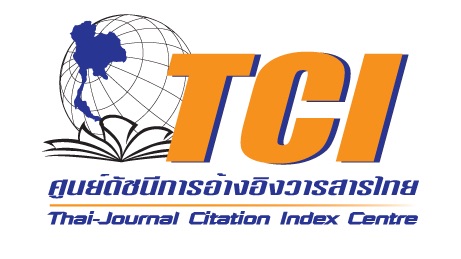Capacity Development and Creating Opportunities for the Elderly through the Cultural Capital Process of the Four Ethnic Groups in Si Sa Ket Province
Keywords:
Capacity Development, Creating Opportunities, Elderly, Cultural Capital, The four ethnic groups in Si sa ket ProvinceAbstract
The objectives of this research were 1) to study the development of roles and potential of the elderly in culture and tradition and the model of the elderly in Si Sa Ket Province, 2) to construct the model of capacity development and creating opportunities for the elderly through the cultural capital process of the four ethnic in Si Sa Ket province, 3) to evaluate the propriety, feasibility, utility, and accuracy of the model of capacity development in terms of culture and tradition in Si Sa KET Province. The research was conducted in 3 phases. Phase 1: Studying related theoretical concepts, the context, capacity development, and creating opportunities for the elderly through the cultural capital process of the four ethnic in Si Sa Ket province and the model of the elderly together with studying related documents and research consisted of 3 steps as follows: 1) studied and analyzed documents regarding concepts, theories, and related research work, 2) conducted field research to study the context by groups discussion consisting of 60 seniors and community leaders using a group discussion format, and 3) conducted in-depth interviewed with the 290 elderly and people involved in the elderly work using the interview form. Phase 2: Building the model of capacity development and creating opportunities for the elderly through the cultural capital process of the four ethnic in Si Sa Ket province consisted of 3 steps as follows: 1) drafted the format and the guide for capacity development and creating opportunities for the elderly through the cultural capital process of the four ethnic in Si Sa Ket province, 2) evaluated the model of capacity development and creating opportunities for the elderly through the cultural capital process of the four ethnic in Si Sa Ket province by 15 experts using the model evaluation form and analyzed data by frequency, percentage, mean, and standard deviation, as well as the propriety, feasibility, utility, and accuracy, and 3) improved the draft of the model for capacity development and creating opportunities for the elderly through the cultural capital process of the four ethnic in Si Sa Ket province as recommended by experts. Phase 3: Evaluating the model of capacity development and creating opportunities for the elderly through the cultural capital process of the four ethnic in Si Sa Ket Province from 20 stakeholders used the model evaluation form and frequency, percentage, mean, and standard deviation, as well as the feasibility, propriety, utility, and accuracy for data analysis. The findings were as follows. 1) The key components of the capacity development and creating opportunities for the elderly through the cultural capital process of the four ethnic in Si Sa Ket Province consisted of the basic skills necessary for learning, community development work, and the participation and coexistence in society. 2) The application of the model to the elderly model consisted of lectures/training, interviews/group discussions, and role-play activities. 3) The model evaluation were the basic learning skills of the elderly model, the ability to work in the community development of the senior model, and the participation and coexistence of the elderly model society. The model evaluation revealed that feasibility, propriety, and utility were at the highest level, while the accuracy was at a high level.
References
กรมการปกครอง. (2563, 10 มกราคม). สถิติผู้สูงอายุ. http://www.dop.go.th/download/knowledge/th1533055363-125_1.pdf. 2560
คณะกรรมการผู้สูงอายุแห่งชาติ. (2553). แผนผู้สูงอายุแห่งชาติ ฉบับที่ 2 (พ.ศ. 2545-2564) ฉบับปรับปรุงครั้งที่ 1 พ.ศ. 2552. โรงพิมพ์เทพเพ็ญวานิสย์.
ณัฏฐ์ฐิตตา เทวาเลิศสกุล, วณิฎา ศิริวรสกุล และชัชสรัญ รอดยิ้ม. (2559). แนวทางการพัฒนาผู้สูงอายุ จากภาระให้เป็นพลังกรณีศึกษาเทศบาลนครรังสิต. วารสาร Veridian E Journal มหาวิทยาลัยศิลปากร ฉบับภาษาไทย, 9(1), 529-545.
ทิวาพร ใจก้อน. (2562). รัฐไทยกับมุมมองเรื่องความแก่ชราและปัญหาผู้สูงอายุใน จังหวัดศรีสะเกษ พ.ศ. 2500-2561. คณะมนุษยศาสตร์และสังคมศาสตร์ มหาวิทยาลัยราชภัฏศรีสะเกษ.
เทอดชาย เอี่ยมลำนำ. (2542). ความทันสมัยและพิธีกรรมทางศาสนาของกลุ่มชาติพันธุ์ เยอ: กรณีศึกษาหมู่บ้านสำโรงโคเฒ่า จังหวัดศรีสะเกษ [วิทยานิพนธ์มานุษยวิทยามหาบัณฑิต สาขามานุษยวิทยา ไม่ได้ตีพิมพ์]. จุฬาลงกรณ์มหาวิทยาลัย.
ธนาภา ศกุนะสิงห์ และจักรพันธ์ ขัดชุ่มแสง. (2558). การนิยามและการแสดงตัวตนของส่วยบ้านเปือยผ่านพิธีกรรมรำแถน. ในการประชุมวิชาการเสนอผลงานวิจัยระดับบัณฑิตศึกษาแห่งชาติ ครั้งที่ 34. (น. 1518-1528). มหาวิทยาลัยขอนแก่น.
บัญญัติ สาลี. (ม.ป.ป.). กูย: ว่าด้วยกลุ่มชาติพันธุ์ ภาษา และตำนาน. คณะมนุษยศาสตร์และสังคมศาสตร์ มหาวิทยาลัยมหาสารคาม.
บูรณ์เชน สุขคุ้ม และธนพล วิยาสิงห์. (2556). วัฒนธรรมอาหารพื้นบ้านของกลุ่มชาติพันธุ์กูยจังหวัดศรีสะเกษ. มหาวิทยาลัยราชภัฏศรีสะเกษ.
ภัคพล บุญเหลือง และบุญชู ภูศรี. (2560). ตำนานปรัมปรา: ความสำคัญกับกลุ่มชาติพันธุ์เยอ อำเภอราษีไศล จังหวัดศรีสะเกษ. เอกสารประกอบการประชุมวิชาการ (Proceedings) การสัมมนาเครือข่ายนักศึกษาระดับบัณฑิตศึกษา สาขาสังคมวิทยาและมานุษยวิทยาครั้งที่ 16 ประจำปีการศึกษา 2559. (น. 369-383). มหาวิทยาลัยนเรศวร.
วิชญะ ศรีพิพัฒนกุล. (2557). วรรณยุกต์ภาษาไทยอีสาน จังหวัดศรีสะเกษ ใน 5 ชุมชนภาษา. จุฬาลงกรณ์มหาวิทยาลัย.
วิภานันท์ ม่วงสกุล. (2558). การพัฒนาศักยภาพผู้สูงอายุที่อาศัยอยู่ตามลำพังด้วยแนวคิดพฤฒพลัง. วารสารสถาบันวิจัยสังคม จุฬาลงกรณ์มหาวิทยาลัย, 38(2), 93-112.
ศูนย์มานุษยวิทยาสิรินธร. (2563, 1 กุมภาพันธ์). กลุ่มชาติพันธุ์ในประเทศไทย.https://www.sac.or.th/ databases/ethnic-groups/.
สำลี รักสุทธี. (2556). ผญา. พ.ศ. พัฒนา.
สุพรรษา อติประเสริฐกุล. (2552). ความเป็นเยอในบริบทพหุวัฒนธรรม: ศึกษากรณีหมู่บ้านใหญ่ จังหวัดศรีสะเกษ [วิทยานิพนธ์ มานุษยวิทยามหาบัณฑิต ภาควิชาสังคมวิทยาและมานุษยวิทยา]. จุฬาลงกรณ์มหาวิทยาลัย.
Downloads
Published
How to Cite
Issue
Section
License

This work is licensed under a Creative Commons Attribution-NonCommercial-NoDerivatives 4.0 International License.







